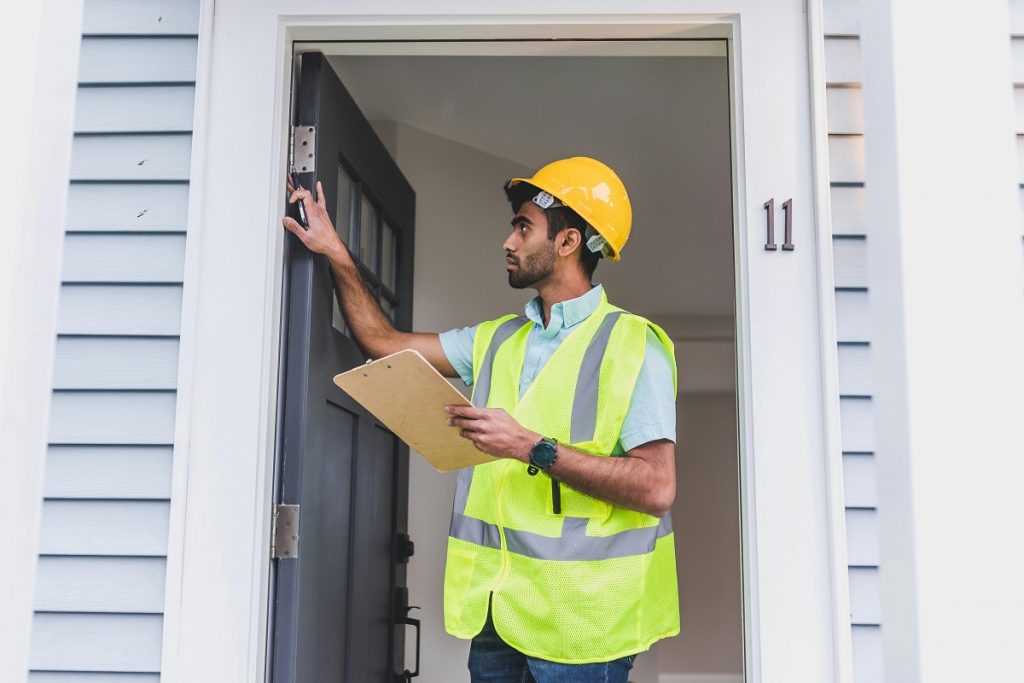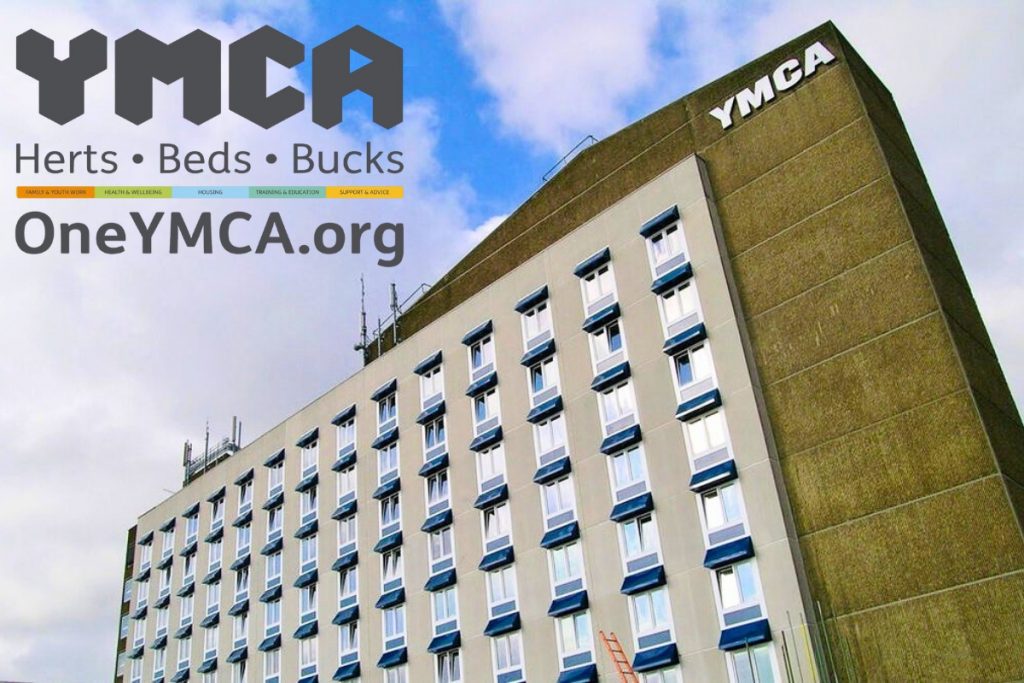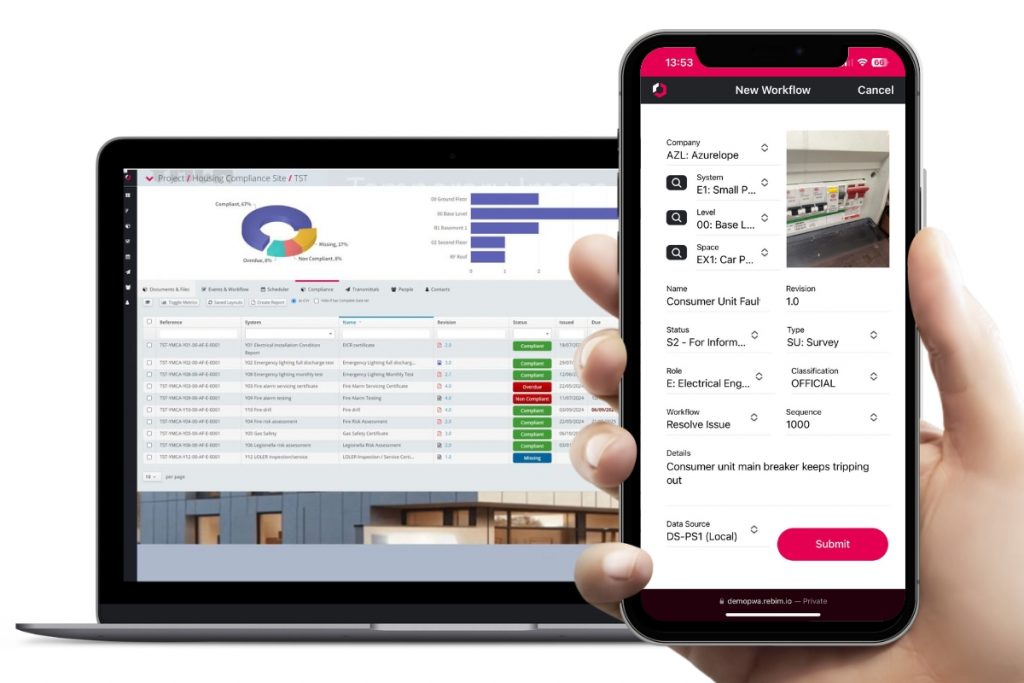
Digital Transformation in Social Housing: Streamlining Maintenance and Compliance
Social housing providers are under increasing pressure to maintain safe, compliant, and well-managed homes while meeting growing regulatory and reporting demands. Yet many organisations still rely on spreadsheets, email trails, and multiple disconnected systems to track repairs, inspections, contractor task management and compliance documentation.
Digital transformation in social housing isn’t just about adopting new software, it’s about bringing information together. Many housing associations use a patchwork of legacy systems and manual processes to manage maintenance and compliance. The result is often data duplication, fragmented communication, and a lack of visibility across teams. The next step forward is integrating these processes into a single connected environment, where teams can access reliable information and manage every task, from reactive repairs to long-term asset planning in one place.
By creating a connected ecosystem including the use of mobile workforce management technology, organisations can reduce administrative burden, improve accountability, and ensure that every compliance activity is recorded and auditable. This shift enables housing providers to focus more time on service delivery and less on chasing data.
The Challenges Facing Social Housing Providers

Housing inspector checking door frame with paper clipboard during property inspection
Managing maintenance and compliance across a large, distributed portfolio is no easy task. Common challenges include:
- Reactive repairs instead of planned maintenance.
- Incomplete or inconsistent compliance data.
- Paper-based processes leading to missing evidence or duplicated effort.
- Delays in communication between contractors, property teams, and leadership.
- Difficulty demonstrating compliance to boards, regulators, and auditors.
These issues don’t just slow down operations, they increase cost, risk, data uncertainty and tenant dissatisfaction.
How Digital Transformation Helps
Platforms such as REBIM® make this possible by providing that integrated environment. A secure, cloud-based system where maintenance, compliance, and asset management workflows all come together.
With REBIM®, housing associations can:
- Create configurable workflows for routine inspections, urgent repairs, and fire risk assessment remedial actions.
- Collect photographic or video evidence live in the field using the mobile app.
- Maintain full audit trails with date and time stamps for every task.
- Integrate reports directly into management dashboards for board-level visibility.
- Ensure compliance with housing regulations and safety standards.
The result is a system that’s efficient, transparent, and built around real operational needs.
Case Study: One YMCA

One YMCA Charter House Hostel – using REBIM® Software
One YMCA, one of REBIM’s clients in the social housing sector, manages a significant and diverse property portfolio across Bedfordshire, Hertfordshire and Buckinghamshire.
By implementing REBIM®’s configurable workflow engine, they digitised over 7,500 live tasks, covering remedial repairs, urgent maintenance, fire risk assessment remedials and compliance reporting. This transformation reduced manual data handling, improved operational visibility, and ensured timely compliance reporting to both regulators and the board of trustees.
“We are delighted with the impact that REBIM® has had at One YMCA, both in terms of our operational efficiency and reporting capability, and we look forward to continuing our journey with them.”
— Chantal Clough, Head of Place, One YMCA
Streamlining Maintenance with Configurable Workflows
REBIM®’s configurable workflows enable housing providers to digitise every maintenance process, from reactive repair requests to cyclical inspections and fire and safety remedials.
Each workflow can be tailored to match your organisation’s processes and naming conventions, while maintaining consistency with all relevant industry standards including The Decent Homes Standard (DHS) plus a range of data standards including ISO 19650 for information management and ISO 55001 for asset management.
Workflows include:
- Maintenance requests and approvals.
- Compliance checks and inspections.
- Fire risk assessment actions.
- Health and safety incident and near miss reporting.
- Contractor task assignments and sign-offs.
All actions are recorded in a single, date/time-stamped thread, complete with chat history, evidence, and status tracking.

REBIM interface for managing social housing compliance and maintenance workflows
Building a Culture of Accountability and Compliance
When maintenance and compliance data is captured in one platform, leadership teams gain clear, real-time visibility of risk, progress, and performance. This data-driven approach supports:
- Faster decision-making.
- Easier regulatory reporting.
- Improved asset performance.
- A proactive maintenance culture.
Digital transformation in social housing isn’t just about technology, it’s about creating a connected, accountable organisation that can plan, act, and report with confidence.
The Future of Social Housing Operations

The Future of Social Housing Operations using Digital Transformation
As regulatory standards evolve and data requirements grow, housing associations that embrace digital transformation will be best placed to respond. With tools like REBIM®, organisations can ensure that their data, processes, and reporting are robust, flexible, and built for the future.
Digital transformation in social housing is no longer optional — it’s essential for operational efficiency, transparency, and compliance.
Conclusion
REBIM® provides a secure, configurable platform that helps housing associations digitise maintenance and compliance while aligning with key standards such as The Decent Homes Standard (DHS), ISO 19650 and ISO 55001.
By connecting field teams, contractors, and management on a single platform, you can ensure that every repair, inspection, and compliance task is logged, evidenced, and auditable.
See how REBIM® can help your organisation comply with housing regulators and still meet your organisation’s unique needs.